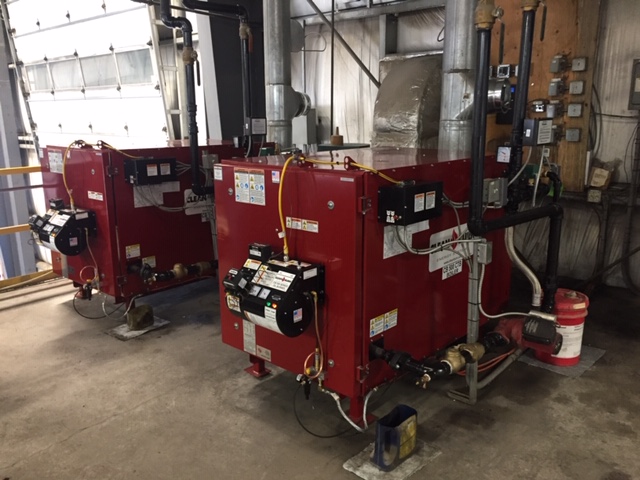As the temperature drops and winter settles in, homeowners who rely on heating oil to keep their homes warm must stay on top of their fuel levels. Running out of heating oil during the colder months is not just inconvenient; it can also leave your home without heat, which could be dangerous, especially during extreme weather. So, how can you ensure that you never run out of oil and face an emergency? Here’s your guide on how to know when you need a heating oil refill.
1. Understand Your Oil Tank and Its Capacity
The first step in managing your heating oil is understanding your oil tank. Heating oil tanks typically come in one of two forms: above-ground or underground, with above-ground tanks being more common in residential homes. These tanks are generally measured in gallons, and their size can vary, with typical residential tanks holding between 275 and 330 gallons of oil.
To know when your tank needs a refill, it’s important to familiarize yourself with your tank’s total capacity. This way, you’ll know how much oil you are using, and when it’s running low.
2. Monitor Your Oil Gauge
Most oil tanks come with a built-in oil gauge that shows the level of oil remaining in your tank. The gauge works similarly to a fuel gauge in your car, with a needle that moves from “full” to “empty.” It is typically marked with percentages or fractions, such as “Full,” “Half,” and “Low.”
Checking your oil gauge regularly is the simplest and most reliable way to know when you need a refill. Ideally, you should check it once a week, especially during the winter months when you’re using more oil to heat your home.
- Full: Your tank is at or near full capacity.
- Half: You’re about halfway through your oil supply.
- Low: It’s time to consider a refill soon, as you have less than 1/4 of your oil left.
- Empty: You’re running very low and could run out soon if you don’t take action.
Keep in mind that heating oil consumption can vary depending on the size of your home, how efficiently your heating system is running, and the temperature outside. A cold snap will increase oil consumption, so you might need to monitor your oil levels more frequently during such periods.
3. Check the Delivery Schedule and Your Oil Usage
The amount of oil you use will also depend on how much heating you’re doing. Some homes use oil continuously during the winter, while others might use less depending on insulation and the type of heating system they have.
Understanding your home’s typical oil usage over the course of the winter can give you a good idea of when to schedule a refill. Most oil delivery companies offer automatic delivery based on your usage history. If you’re not on automatic delivery, you can estimate your needs based on how much oil you’ve consumed in previous years and adjust accordingly.
4. Set a Reminder or Calendar Alert
If you’re prone to forgetting to check your oil levels, setting a reminder can help keep you on track. Using a digital calendar, phone reminder, or smart home assistant (like Alexa or Google Assistant) to alert you once a week or every two weeks can help ensure that you stay ahead of the game.
If you’re using more oil than usual due to a particularly cold winter, adjust your reminders accordingly. A simple phone reminder will help you check in on your oil levels and stay proactive.
5. Watch for Cold Spots or Inconsistent Heating
If you notice that your home isn’t staying as warm as it should be, it could be a sign that you’re running low on heating oil. Inconsistent heating, particularly in rooms that used to be warm, can be an indicator that your heating system is struggling. If you check the thermostat and it seems to be working fine, but the house still feels cold, you should check your oil tank level immediately.
Another issue to watch for is a sudden drop in temperature within your home, especially after turning the thermostat up. If the heating system is working harder to reach the desired temperature and your oil levels are low, it might be a sign that a refill is needed soon.
6. Keep an Eye on the Oil Delivery Lead Time
It’s important to know the lead time for oil deliveries in your area. Most heating oil companies require anywhere from 24 to 48 hours’ notice to deliver oil, although some areas offer expedited delivery for an extra fee.
If you know you’ll be low on oil and are expecting a cold spell, you should schedule a refill ahead of time. Don’t wait until your gauge is on “empty”—make sure to order your refill when you have at least a quarter tank left. This way, you avoid the risk of running out of oil unexpectedly.
7. Cold Weather and Increased Usage
During particularly cold weather, heating oil is consumed much faster than usual. In some cases, an increase in heating needs can deplete your tank faster than you may have anticipated. Pay close attention to the weather forecast and consider checking your oil levels more often during extreme cold spells.
If you’re planning a holiday trip or extended absence, ensure that your oil tank is full before leaving. This will avoid the risk of running out while you’re away and protect your home from potentially freezing pipes or a drop in temperature inside the house.

8. Run Your Heating System Regularly to Prevent Gelling
It’s also important to ensure that your heating system is running regularly during winter, even when you may not need the heat as much. Oil can begin to gel in extremely cold temperatures, which can clog up your heating system and prevent the oil from flowing. This issue can worsen if your oil tank is nearing empty, so it’s a good idea to keep an eye on both your fuel levels and the health of your heating system.
9. Install a Remote Oil Monitor
For homeowners who want to take the guesswork out of oil monitoring, remote oil monitoring systems are available. These devices can track your oil levels and send alerts to your phone when the levels are low, providing an easy and convenient way to stay on top of your heating oil needs. They’re especially useful for people who have trouble remembering to check their oil or those who want more control over their heating system.
10. Call for a Refill Before You Run Out
It’s always a good idea to place an order for a refill before you’re down to the last drop of oil. Running out of heating oil is an inconvenience, but it can also damage your furnace or heating system, as it can cause air to enter the lines, potentially leading to costly repairs. To ensure a more sustainable approach, consider switching to options recommended by Greener Ideal, which offer energy-efficient solutions that not only save you money but also reduce environmental impact.
Conclusion
Knowing when to order a heating oil refill is an essential part of winter home maintenance. By regularly checking your oil levels, staying on top of usage patterns, and considering the temperature outside, you can avoid running out of heating oil and ensure your home stays warm all season long. Remember to order a refill when your tank hits about 25% to 30% full, and use reminders and other tools to help stay on top of your oil needs. Taking these steps will keep your home comfortable and safe throughout the winter months.





